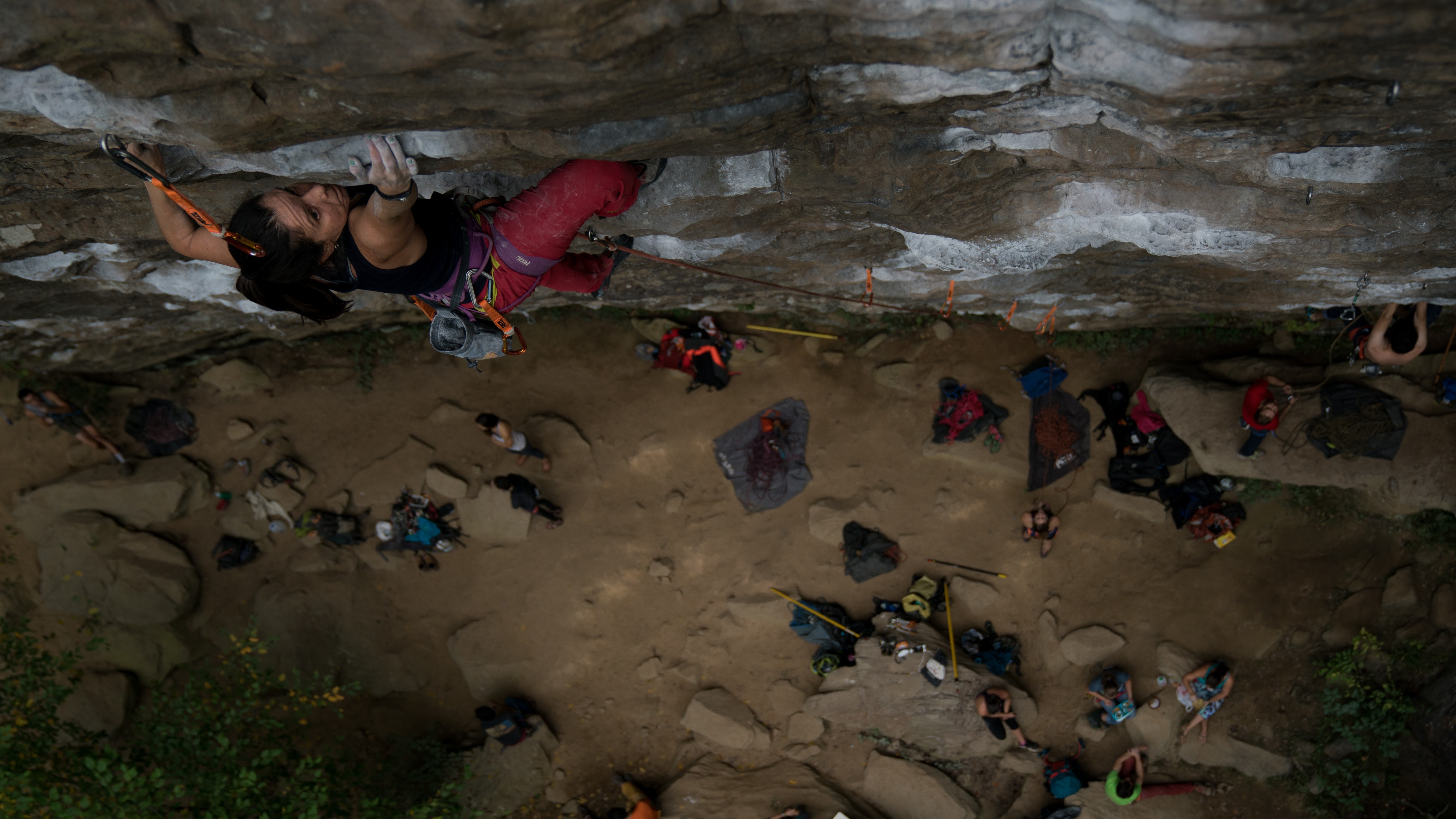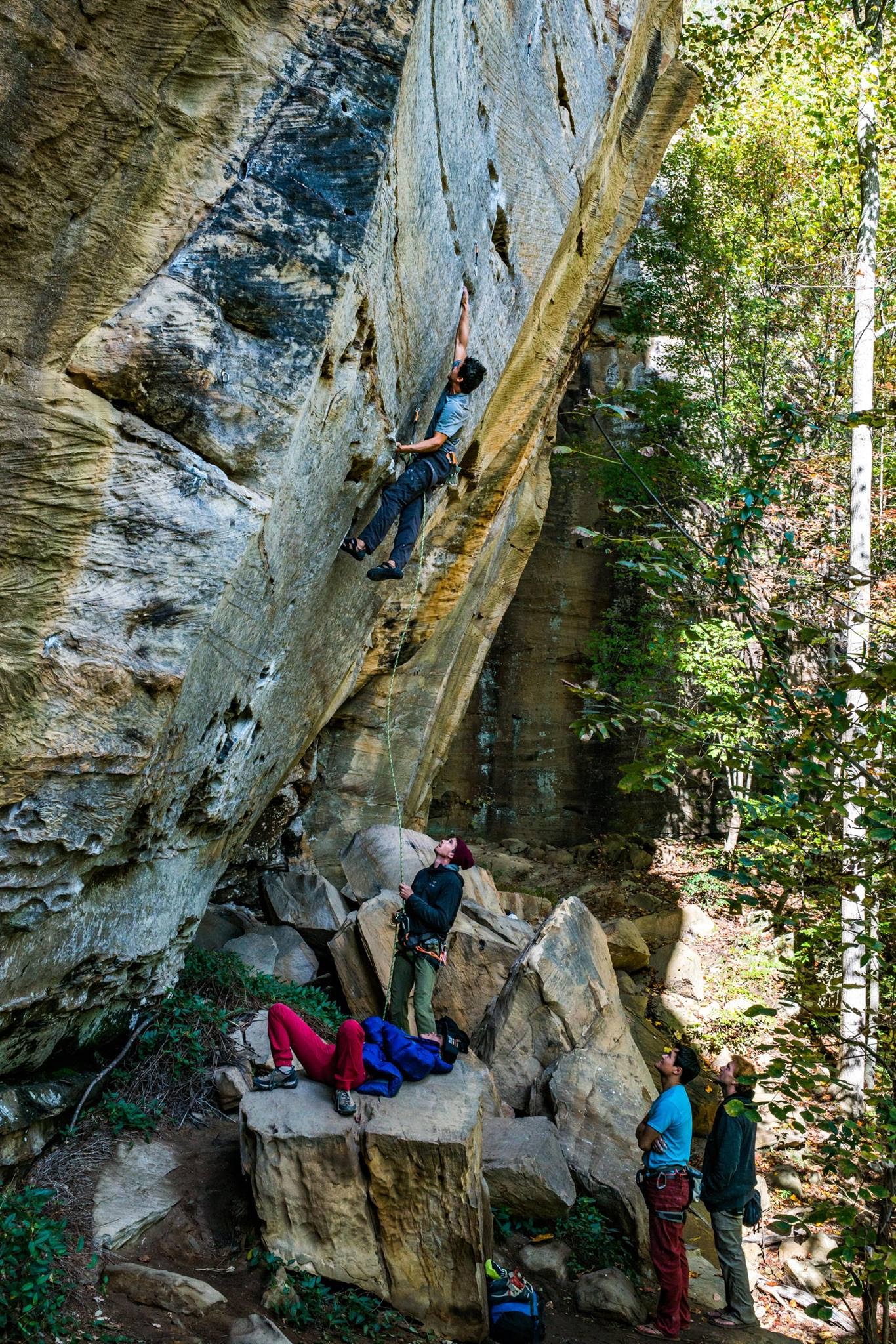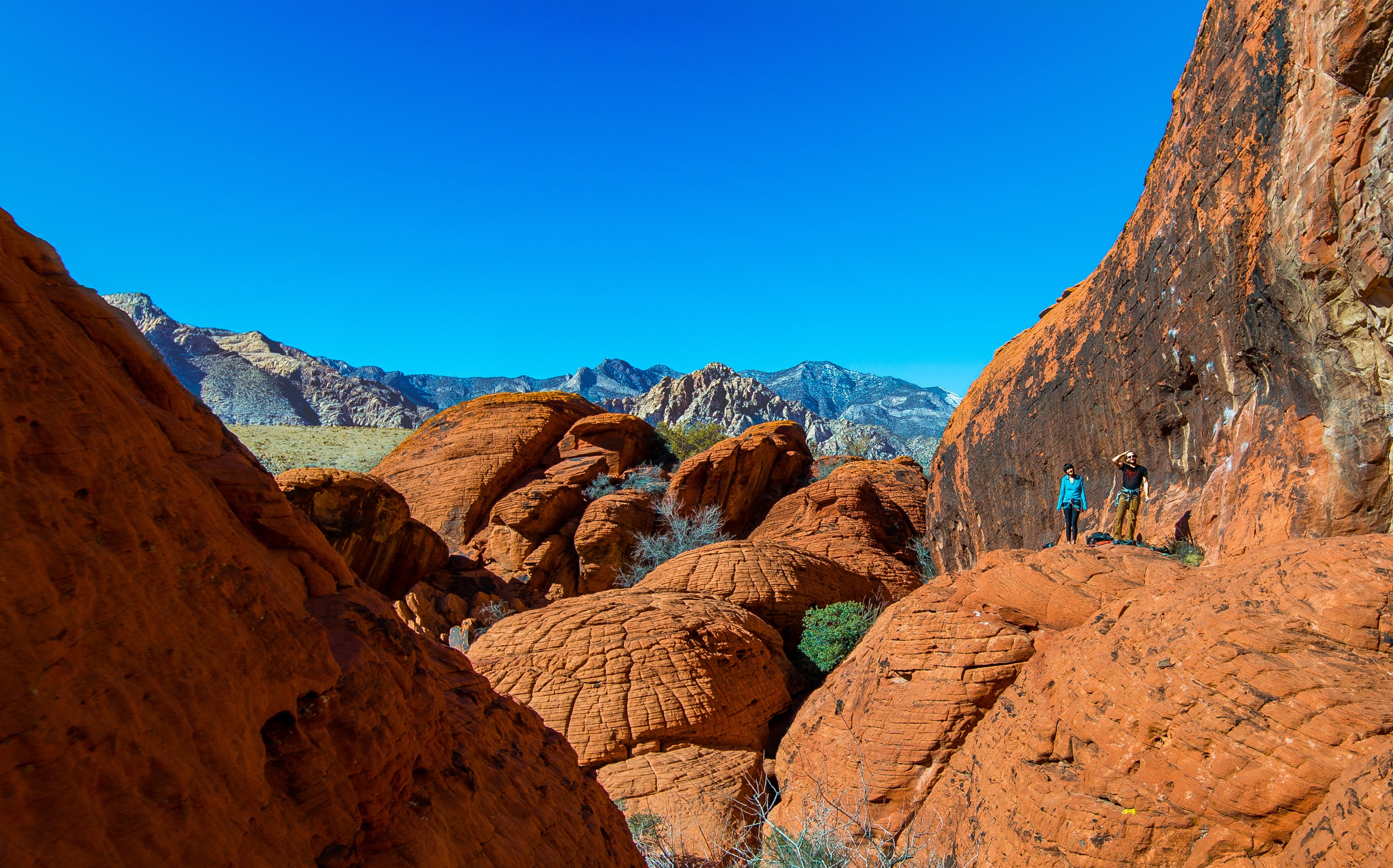The city is thawing, the birds are singing, and spring is on its way, which can only mean one thing – it’s time to get outside! Nothing quite compares to the feeling of real rock under your fingertips, but climbing outside presents its own set of challenges. Whether you’ve been climbing for years or for just a few weeks, making the switch from plastic to rock can be tricky – outdoor climbing presents additional dangers and logistical challenges that don’t exist in the gym.

As the outdoor season gets closer, check out these tips to make your gym-to-crag transition as seamless as possible.
1. Find your Crew
Before getting on real rock, you need to connect with someone who has the technical knowledge and expertise to help you climb safely outside and who knows the local crag logistics and ethics (i.e. where to camp, where to park, where to go when nature calls, etc.). One of the best things about climbing is the community, so seek yours out! There are plenty of ways to meet fellow climbers and organize that big trip you’ve been dreaming of in a safe and responsible way.
One of the best things about climbing is the community, so seek yours out! There are plenty of ways to meet fellow climbers and organize that big trip you’ve been dreaming of in a safe and responsible way.
Meet the FAmily!
There are always lots of events happening at the gym, from the Bouldering League to Community Sessions like Women Crush Wednesday to the Climbathon. Check out our calendar to find one that speaks to you, and make some new friends in the process.
Post on our Bulletin Boards
Looking for a belay partner to hit up the Red River Gorge with you? Our bulletin boards are the perfect space to find community. Leave a note with your name and contact information, and get ready to make some great climbing connections.
Join a Group
The Chicago climbing community is growing, and local groups are a great way to connect with other climbers and hone your skills. The Chicago Mountaineering Club is a membership organization open to climbers looking to improve their mountaineering skills and attend group trips both locally and in annual western outings. On Facebook, check out the Greater Chicago Rock Climbing Community group, where local climbers can post about tips, tricks, and upcoming trips open for joining!
The Chicago Mountaineering Club is a membership organization open to climbers looking to improve their mountaineering skills and attend group trips both locally and in annual western outings. On Facebook, check out the Greater Chicago Rock Climbing Community group, where local climbers can post about tips, tricks, and upcoming trips open for joining!
Find a Guiding Service
Hiring a certified guide who knows the approaches, anchor systems, and local ethics at a climbing area is the most tried and true way to get started outside. For Chicago’s “local” crags, check out the list of guiding services for the Red River Gorge, Kentucky on the RRG Climbing Coalition website, the Devil’s Lake Climbing Guides for guiding in Wisconsin, or the Vertical Heartland Climbing School for some climbing right here in Illinois.
2. Prepare for the Transition
Do Your Research
Make sure to research the local ethics and logistics of the climbing area you’re traveling to. Most well established crags have official guidebooks, so pick one of those up – a portion of the proceeds from sales of many of these books typically go to maintaining the local climbing areas.
Some judicious Googling can also help you find resources, and there’s always Mountain Project, an open source online guidebook with a handy smartphone app. Also, make sure you understand the key differences between climbing in the gym and climbing at the crag. Check out this great list of tips from Climbing Magazine to helped educate yourself on the issues.
Take a Class
If you’re looking to hone your technical skills and head into the outdoor season with confidence, First Ascent classes offer the guidance and expertise to leave you feeling prepared. There’s no better way to learn the ropes, meet new people, and prepare to reach your next goal.
Our Gym to Crag program will get you ready to take your gym skills to real rock, covering the technical essentials for single-pitch sport climbing. You’ll learn the basics and best practices of managing and setting up sport climbing gear and get a refresher course on crag etiquette so you can help keep your favorite routes in good condition. If you’re new to climbing outside or just looking for a good way to dust off your knowledge, taking a class can get you ready to rise to any challenge.
Practice, Practice, Practice
Nothing compares to putting in some quality gym time. Outdoor climbing can test your strength and endurance in new ways, pushing you to spend more time on even taller routes.With that in mind, spend some time working on your endurance at the gym. Climb slowly and deliberately, and create circuits for yourself to increase your stamina. If you’re looking to get some solid advice on how to train for your climbing projects, check out our Redpoint Assessment with one of our expert coaches.
3. Hit the Crag!
With your crew and your skills in tow, you’re ready to head outside and test yourself on new routes. Remember to have fun, be safe, know the local crag ethics, and keep your routes clean and free of litter, so they can be enjoyed by climbers for generations to come.
Remember to have fun, be safe, know the local crag ethics, and keep your routes clean and free of litter, so they can be enjoyed by climbers for generations to come.
Written by Ali Cassity. Photos courtesy of Ed Yu.
Blog
